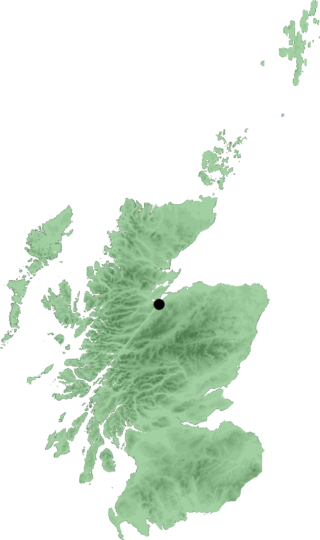Related Research Articles

General aviation (GA) is defined by the International Civil Aviation Organization (ICAO) as all civil aviation aircraft operations except for commercial air transport or aerial work, which is defined as specialized aviation services for other purposes. However, for statistical purposes, ICAO uses a definition of general aviation which includes aerial work.

Flight training is a course of study used when learning to pilot an aircraft. The overall purpose of primary and intermediate flight training is the acquisition and honing of basic airmanship skills.

In most countries one is required to obtain a glider pilot license (GPL) or certificate before acting as pilot of a glider. The requirements vary from country to country.

A private pilot licence (PPL) or private pilot certificate is a type of pilot licence that allows the holder to act as pilot in command of an aircraft privately. The basic licence requirements are determined by the International Civil Aviation Organization (ICAO), but implementation varies from country to country. According to ICAO, an applicant must be at least 17 years old, demonstrate appropriate knowledge and skill, and hold at least a Class 3 medical certificate. Different PPLs are available for different categories of aircraft, such as aeroplane, helicopter, airship, etc., and are not interchangeable, although experience from a PPL in one category may be credited towards the issue of another.
The airline transport pilot license (ATPL), or in the United States of America, an airline transport pilot (ATP) certificate, is the highest level of aircraft pilot certificate.
A commercial pilot licence (CPL) is a type of pilot licence that permits the holder to act as a pilot of an aircraft and be paid for their work.
Pilot licensing or certification refers to permits for operating aircraft. Flight crew licences are issued by the civil aviation authority of each country, which must establish that the holder has met minimum knowledge and experience before issuing licences. The licence, along with the required class or type rating, allows a pilot to fly aircraft registered in the licence issuing state.

Pilot certification in the United States is typically required for an individual to act as a pilot-in-command of an aircraft. It is regulated by the Federal Aviation Administration (FAA), a branch of the U.S. Department of Transportation (USDOT). A pilot may be certified under 14 Code of Federal Regulations (CFR) Part 61 or 14 CFR Part 141. Pilots may also be certified under 14 CFR Part 107 for commercial drone operations.

Pilot licensing in Canada is administered by Transport Canada under the Aeronautics Act and the Canadian Aviation Regulations (CARs).
Pilot licensing in the United Kingdom is regulated by the Civil Aviation Authority (CAA).
An Aviation Medical Examiner or Aero-medical Examiner (AME) is a physician designated by the national aviation authority and given the authority to perform flight physical examinations and issue aviation medical certificates. AMEs are practitioners of aviation medicine, although most are also qualified in other medical specialties.

A flight instructor is a person who teaches others to operate aircraft. Specific privileges granted to holders of a flight instructor qualification vary from country to country, but very generally, a flight instructor serves to enhance or evaluate the knowledge and skill level of an aviator in pursuit of a higher pilot's license, certificate or rating.

A type rating is an authorization entered on or associated with a pilot license and forming part thereof, stating the pilot's privileges or limitations pertaining to certain aircraft type. Such qualification requires additional training beyond the scope of the initial license and aircraft class training.
The National Private Pilot Licence (NPPL) is a licence to fly United Kingdom registered aircraft within the United Kingdom. It is a more basic licence than the private pilot licence (PPL), and cannot be used to fly all aircraft. It can be used to fly basic aircraft such as vintage aircraft or kit-built aircraft. To fly many basic aircraft such as the Cessna 172, it is necessary to upgrade to at minimum a light aircraft pilot licence (LAPL).

Highland Aviation Training Ltd is an Approved Training Organisation at Inverness Airport. Highland Aviation offers flight training and aircraft maintenance, including Piper and Cessna Aeroplanes and Autogyro/Rotorsport Gyrocopters.
The light aircraft pilot licence (LAPL) is a pilot license allowing the pilot to fly small aircraft. It is issued in EASA member states and the United Kingdom. Unlike most other licences, it is not covered by the ICAO framework and is usually not able to be used in other states or regulatory areas.

A pilot logbook is a record of a pilot's flying hours. It contains every flight a pilot has flown, including flight time, number of landings, and types of instrument approaches made. Pilots also log simulator time, as it counts towards training.
A night rating permits an aircraft pilot to fly at night under visual flight rules. The alternative is flight by instrument flight rules (IFR), under which visual reference to terrain and traffic is not required.
Upset Prevention and Recovery Training (UPRT) is a combination of theoretical and practical training given to aircraft pilots to enable the pilot to prevent, recognise and recover from unusual attitudes and unexpected situations.
Aviation in the European Union and the European Free Trade Association is regulated by the European Union Aviation Safety Agency (EASA). EASA specifies common standards for the licensing of aircraft pilots. EASA does not issue licences, rather licences are issued by member states. However, because the same standards are used, EASA licences are recognised by all member states.
References
- ↑ https://www.casa.gov.au/licences-and-certificates/pilots/pilot-licences/getting-recreational-pilot-licence-rpl
- 1 2 "Day VFR Syllabus (Aeroplanes) - Civil Aviation Safety Authority". Civil Aviation Safety Authority Official Website. 1 January 2010. Retrieved 20 December 2016.
- ↑ "Day VFR Syllabus (Helicopters) - Civil Aviation Safety Authority". Civil Aviation Safety Authority Official Website. 1 October 2008. Retrieved 20 December 2016.
- ↑ https://www.casa.gov.au/licences-and-certificates/pilots/pilot-licences/commercial-pilot-licences/getting-commercial-pilot-licence-cpl
- ↑ https://www.casa.gov.au/licences-and-certificates/pilots/pilot-licences/air-transport-pilot-licences/getting-air-transport-pilot-licence-atpl
- ↑ https://www.casa.gov.au/licences-and-certificates/pilots/pilot-licences/military-and-international-licences/use-military-flight-crew-qualification
- 1 2 3 https://www.casa.gov.au/licences-and-certificates/pilots/pilot-licences/military-and-international-licences/converting-overseas-flight-crew-licence#